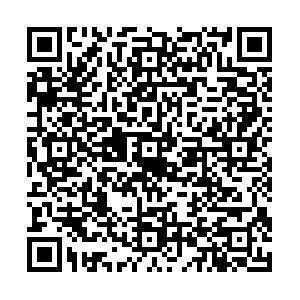Psychological and behavioral problems and associated factors in children with tic disorders
-
摘要:
目的 研究抽动障碍儿童的心理行为问题及相关因素,为合理干预治疗提供依据。 方法 采用病例对照研究方法,选择2020年6月至2021年6月华中科技大学同济医学院附属同济医院儿科神经门诊就诊的69名抽动障碍(TD)儿童作为病例组,并按性别与年龄匹配同期69名非TD的正常儿童作为对照组,通过填写一般情况调查表、儿童焦虑性情绪筛查量表 41项(SCARED-41)、长处和困难问卷(SDQ-25)及儿童抑郁量表 10项(CDI-10)等,分析TD儿童的心理行为问题及相关因素。 结果 TD组与对照儿童组SCARED-41总分、SDQ-25总分及SDQ-25困难部分、CDI-10总分分别为(22.1±12.5,13.3±12.3)(21.1±6.0,15.9±3.4)(15.6±6.3,9.3±3.6)(3.7±2.9,2.6±2.9)分,差异有统计学意义(t/Z值分别为3.8,13.9,6.9,-2.6,P值均 < 0.05)。对TD组儿童的多重线性回归分析显示,母亲学历大学本科对SDQ-25情绪症状、大学专科对SDQ-25亲社会行为(B值分别为-2.20,2.14),父母管教态度宽松对SCARED-41广泛性焦虑、担心对SDQ-25多动(B值分别为-7.44,3.00),电子设备使用时长对SCARED-41躯体化/惊恐、学校恐怖和SDQ-25品行问题(B值分别为0.49,0.30,0.20)及运动强度小强度对CDI-10(B=-0.15)等量表得分影响有统计学意义(P值均<0.05)。 结论 TD儿童容易出现焦虑/抑郁情绪及行为问题,并与母亲学历、父母管教态度、电子设备使用时长及运动强度等因素相关。 Abstract:Objective To study the psychological and behavioral problems of children with tic disorders (TD), and to identify related influencing factors for effective medical intervention strategies. Methods From June 2020 to June 2021, 69 children with TD were randomly selected as the case group in the pediatric neurologic clinic, while the control group included 69 healthy children who were matched by gender and age. The data were obtained through general questionnaire, Screen for Child Anxiety Related Emotional Disorders-41 (SCARED-41), Strengths and Difficulties Questionnaire-25 (SDQ-25) and the Children's Depression Inventory-Short Form (CDI-10), while psychological and behavioral problems and their related risk factors were analyzed. Results The total scores of SCARED-41, SDQ-25 and its difficulties scale, and CDI-10 were (22.1±12.5, 13.3±12.3) (21.1±6.0, 15.9±3.4) (15.6±6.3, 9.3±3.6) (3.7±2.9, 2.6±2.9) in the TD and control group respectively, with significant differences (t/Z=3.8, 13.9, 6.9, -2.6, P < 0.05). According to multiple linear regression of children in the TD group, statistically significant effects of maternal bachelor degree on SDQ-25 emotional symptoms, associate degree on SDQ-25 prosocial behavior (B=-2.20, 2.14), lenient parenting attitude on SCARED-41 general anxiety, worry on SDQ-25 hyperactivity (B=-7.44, 3.00), time spent on electronic devices on SCARED-41 somatic/panic, school phobia and SDQ-25 conduct problems (B=0.49, 0.30, 0.20) and exercise intensity of small intensity on CDI-10 (B=-0.15)were observed (P < 0.05). Conclusion Children with TD are prone to emotional disturbances such as anxiety, depression and behavioral problems, all of which are related to their mothers' educational background, parents' attitude towards discipline, the duration of electronic device use and exercise intensity. -
Key words:
- Mental health /
- Behavior /
- Regression analysis /
- Child
1) 利益冲突声明 所有作者声明无利益冲突。 -
抽动障碍(tic disorders, TD)是一种儿童期起病、以抽动为主要表现的神经精神疾病,可伴有多种共患病,包括注意缺陷与多动障碍、学习困难、情绪障碍及品行障碍等[1],其病因复杂,受遗传、环境、生物和心理等多种因素影响[2],治疗方法需根据病因和疾病严重程度不同而采用心理行为、药物、神经调控及免疫等多种形式。既往报道已发现TD儿童心理行为受性别、一级亲属学历及管教态度等因素影响[3-5]。本研究进一步通过儿童焦虑性情绪筛查、长处和困难问卷及儿童抑郁等多维量表分析,涵盖并增加父母管教态度及文化程度、电子设备使用时间、运动强度等多项关联因子,以期更为针对性地分析TD儿童的心理行为问题及其影响因素,旨在为合理干预治疗提供依据。
1. 对象与方法
1.1 对象
共收集2020年6月至2021年6月于华中科技大学同济医学院附属同济医院儿科神经门诊就诊的133名TD患儿资料,依据年龄进行分层随机抽样,选取其中69名TD患儿作为病例组。纳入标准:(1)符合《美国精神病学会精神神经病诊断统计分册第5版》[6]TD诊断标准;(2)年龄小于18岁;(3)监护人同意患者参与此研究,并签署知情同意书。排除标准:(1)由遗传、感染、中毒、药物及其他因素导致的继发性TD;(2)患风湿性舞蹈病、肝豆状核变性、癫痫及其他锥体外系疾病。同时按照性别及年龄匹配69名非TD的正常儿童作为对照组。其中TD组男生59名(85.5%)、女生10名(10.5%),年龄9~16岁,平均年龄(10.31±1.90)岁。本研究获得了所有参与调查儿童及其家长的知情同意,并取得华中科技大学同济医学院伦理委员会的批准(批号:S062)。
1.2 方法
采取问卷调查方式,儿童填写儿童抑郁量表及儿童焦虑性情绪筛查量表,家长填写一般情况调查表及长处和困难问卷,并由专人负责解释,同时指导其完整填写。
1.2.1 一般情况
由华中科技大学公共卫生学院儿少卫生与妇幼保健学系编制问卷,包括性别、是否患有抽动障碍、母亲学历、父母管教态度、运动强度、使用电子设备时间等。
1.2.2 焦虑
儿童焦虑性情绪筛查量表(Screen for Child Anxiety Related Emotional Disorders-41, SCARED-41)包括41个条目,分为5个因子:躯体化/惊恐、广泛性焦虑、分离性焦虑、社交恐怖及学校恐怖,每题0~2分。此量表经过信度、效度检验, 并建立了中国城市常模,Cronbach α系数为0.432~0.775,特异度82%,灵敏度79%。总分≥23分即考虑焦虑障碍可能[7]。
1.2.3 抑郁
儿童抑郁量表(Children's Depression Inventory, CDI)是针对儿童青少年抑郁使用最广泛的自评量表[8],其Cronbach α系数为0.853。本研究使用简短版CDI-10作为抑郁症的筛查工具,每题0~2分,5个项目反向计分,总得分≥ 4即可考虑出现抑郁症状[9]。
1.2.4 情绪及行为
长处和困难问卷(Strengths and Difficulties Questionnaire-25, SDQ-25)分为困难部分(情绪症状、品行问题、多动及同伴交往问题)及长处部分(亲社会行为)。每题0~2分,5个项目反向计分,得分越高说明情况越突出。中国2000年引入该量表,经验证具有良好信度及效度,其Cronbach α系数为0.78[10]。
1.3 统计学方法
采用SPSS 23.0进行统计分析,计数资料以[n(%)]表示,计量资料用(x±s)表示,并采用配对样本的Wilcoxon符号秩检验及t检验进行组间比较。采用单因素及多重线性回归分析TD儿童心理行为问题的影响因素,检验水准α=0.05。
2. 结果
2.1 TD组与对照组儿童各量表得分比较
TD组儿童SDQ-25长处部分得分低于对照组[(5.6±2.5,6.5±2.0)分],TD组SCARED-41总分、SDQ-25困难部分、SDQ-25总分和CDI-10总分[(22.1±12.5,15.6±6.3,21.2±6.0,3.7±2.9)分]均高于对照组[(13.3±12.3,9.3±3.6,15.9±3.4,2.6±2.9)分],除SDQ长处部分外,两组间SCARED-41总分、SDQ-25困难部分、SDQ-25总分和CDI-10总分差异均有统计学意义(t/Z值分别为3.8,6.9,13.9,-2.6,P值均<0.05)。TD组抑郁症状检出率为43.5%,焦虑障碍检出率为42.0%,高于对照组的12.7%及17.4%。
2.2 TD组焦虑抑郁情绪及行为问题相关因素分析
多重线性回归分析显示,母亲学历为本科的患儿情绪症状更少(B=-2.20),母亲学历为专科的患儿亲社会行为更多(B=2.14)。管教方式中,家长态度宽松的患儿广泛性焦虑更少(B=-7.44),而家长态度过度担心的患儿多动更明显(B=3.00);适量运动可改善TD患儿抑郁情绪(B=-0.15);使用电子设备时间越长越容易导致TD儿童出现躯体化/惊恐(B=0.49)、学校恐怖(B=0.30)和品行问题(B=0.20)(P值均 < 0.05)。见表 1。
表 1 抽动障碍儿童心理行为问题影响因素多重线性回归分析(B值,n=69)Table 1. Multiple linear regression analysis of influencing factors of psychological and behavioral problems in TD group(B, n=69)自变量 选项 SCARED-41 SDQ-25 CDI-10 躯体化/惊恐 广泛性焦虑 分离性焦虑 社交恐怖 学校恐怖 情绪症状 品行问题 多动 同伴交往问题 亲社会行为 母亲学历 高中/同等学历 -0.18 -0.78 -0.33 -0.19 -0.82 0.43 0.25 -0.16 0.15 1.22 -0.48 大学专科 -2.36 -1.31 -1.76 -2.26 -0.76 0.45 -0.17 -0.52 -1.48 2.14* -1.60 大学本科 -2.14 -2.52 -1.33 -1.77 -0.62 -2.20* -0.10 -1.24 -0.91 1.57 -2.24 研究生 -1.36 -2.67 -2.55 -2.20 -1.76 -1.54 -0.17 -2.00 -2.05 0.43 -2.02 父母管教态度 严格 0.25 -0.60 -0.34 0.18 0.65 0.01 0.30 1.40 0.32 0.65 0.06 担心 -1.37 -1.98 -1.46 -1.39 0.36 1.20 0.40 3.00* 1.16 -0.85 0.57 宽松 -6.49 -7.44* -5.32 -5.08 -1.33 -2.38 0.56 1.95 -0.40 -2.05 0.57 运动强度 轻微运动 0.08 0.02 -1.46 0.63 0.38 -1.24 -0.25 -0.64 -0.82 1.29 -1.88 小强度运动 -2.20 -2.68 -2.22 -1.68 -0.50 -1.78 -0.96 -0.82 -0.13 1.12 -0.15* 中等强度运动 2.54 1.62 -0.41 0.11 0.21 -1.44 0.09 -1.25 -1.17 -0.10 -2.83 电子设备使用时间 0.49* 0.30 -0.90 0.19 0.30** 0.02 0.20* -0.07 0.01 -0.10 0.24 注:*P<0.05;**P<0.01。母亲学历、父母管教态度、运动强度分别以初中、合理、未参与运动为对照。 3. 讨论
本研究发现,TD儿童较正常者心理行为问题更加突出,如明显的焦虑抑郁情绪并共患品行障碍、多动及同伴交往障碍等,符合既往研究报道,即抽动障碍儿童易出现焦虑、抑郁、冲动、睡眠障碍、学习障碍、破坏性行为及强迫症等心理行为问题[11-13],并受多种因素影响,如疾病严重程度、儿童性格特征、亲子关系、父母情绪及婚姻质量等[3-4, 14],本文在此基础上进一步纳入父母学历及管教态度、运动强度及电子设备使用时间等进行相关因素分析。
在教育背景方面,母亲本科学历的患儿情绪症状减少,大专学历的患儿亲社会行为增加,即在一定程度上,母亲学历较高时抽动障碍儿童出现心理、行为问题的风险降低。通常情况下,母亲是儿童主要带教者,其在子女教育和疾病治疗等方面的压力可导致出现焦虑、抑郁等不良情绪[15],并可影响对孩子的正向引导,进而导致患儿的行为抑制性气质[16];随着母亲学历的提升,其排解不良情绪的能力增强[17],并可获得多方面的支持而降低带教压力[18],进而传递给儿童的负面情绪相对较少而减少心理问题,同时父母文化程度可正向预测幼儿的社会性发展水平,其原因在于拥有较高文化水平的父母更能意识到培养儿童适应行为的重要性,进而有利于儿童亲社会行为的获得与发展[19]。
在管教态度方面,家长态度宽松时,患儿广泛性焦虑更少,反之家长态度过度担心可使患儿出现更为严重的多动症状。父母过于严厉、担心或放纵等错误的管教态度已被认定是导致儿童出现注意力缺陷/多动冲动障碍的重要因素[20],同理推测父母过度担心的态度亦可加重TD儿童的多动症状,但需大样本多中心的研究进一步证实。家长态度宽松,同时配合亲子互动、家庭人际关系和谐等可改善亲子关系、提升父母带教能力,进而缓解抽动障碍儿童不良情绪而降低其心理、行为问题风险[21-22]。
在电子设备使用方面,TD儿童沉溺时间越长越容易导致躯体化/惊恐、学校恐怖及品行问题,原因可能在于我国的电子信息分级制度有待完善,同时若缺乏家长及学校的监管,患儿长时间接触到恐怖、暴力等不利于身心健康的内容后,易模仿此类不良信息而产生破坏性行为或残忍行为,同时长时间使用电子产品会分散学习精力而导致成绩下降甚至厌学;亦有研究发现,电子设备如手机所产生的辐射可影响儿童神经系统发育、甚至退行性改变[23-24]。有学者认为,青少年每天使用电子设备的时长应不超过2 h[25],尤其TD患儿更应该减少非必要的电子产品使用时长,其心理行为问题与使用电子设备时长之间的关联有待进一步研究。
本研究发现,适量运动可改善患儿的抑郁情绪,其原因在于锻炼后身体可释放5-羟色胺等抗疼痛及抗抑郁神经递质[26],开展适度体育锻炼有益身心健康、降低儿童抑郁症发生[27-28];除减少抑郁症外,近期学者还发现运动可提升儿童的实践能力、计算能力、演绎推理逻辑能力及语言和视觉空间的长/短期记忆等[29],故此建议青少年每天进行至少60 min中等或以上强度的有氧运动,其中包含可强化骨骼及肌肉的身体活动[30]。
综上所述,TD儿童容易出现焦虑/抑郁情绪,并共患行为问题,母亲学历、父母管教态度、电子设备使用时长及运动强度对其有一定影响。早期情绪行为障碍筛查并及时合理干预,减少电子产品应用、鼓励适度体育锻炼和亲子情感交流等有助于恢复健康。
-
表 1 抽动障碍儿童心理行为问题影响因素多重线性回归分析(B值,n=69)
Table 1. Multiple linear regression analysis of influencing factors of psychological and behavioral problems in TD group(B, n=69)
自变量 选项 SCARED-41 SDQ-25 CDI-10 躯体化/惊恐 广泛性焦虑 分离性焦虑 社交恐怖 学校恐怖 情绪症状 品行问题 多动 同伴交往问题 亲社会行为 母亲学历 高中/同等学历 -0.18 -0.78 -0.33 -0.19 -0.82 0.43 0.25 -0.16 0.15 1.22 -0.48 大学专科 -2.36 -1.31 -1.76 -2.26 -0.76 0.45 -0.17 -0.52 -1.48 2.14* -1.60 大学本科 -2.14 -2.52 -1.33 -1.77 -0.62 -2.20* -0.10 -1.24 -0.91 1.57 -2.24 研究生 -1.36 -2.67 -2.55 -2.20 -1.76 -1.54 -0.17 -2.00 -2.05 0.43 -2.02 父母管教态度 严格 0.25 -0.60 -0.34 0.18 0.65 0.01 0.30 1.40 0.32 0.65 0.06 担心 -1.37 -1.98 -1.46 -1.39 0.36 1.20 0.40 3.00* 1.16 -0.85 0.57 宽松 -6.49 -7.44* -5.32 -5.08 -1.33 -2.38 0.56 1.95 -0.40 -2.05 0.57 运动强度 轻微运动 0.08 0.02 -1.46 0.63 0.38 -1.24 -0.25 -0.64 -0.82 1.29 -1.88 小强度运动 -2.20 -2.68 -2.22 -1.68 -0.50 -1.78 -0.96 -0.82 -0.13 1.12 -0.15* 中等强度运动 2.54 1.62 -0.41 0.11 0.21 -1.44 0.09 -1.25 -1.17 -0.10 -2.83 电子设备使用时间 0.49* 0.30 -0.90 0.19 0.30** 0.02 0.20* -0.07 0.01 -0.10 0.24 注:*P<0.05;**P<0.01。母亲学历、父母管教态度、运动强度分别以初中、合理、未参与运动为对照。 -
[1] 刘智胜, 秦炯, 王家勤, 等. 儿童抽动障碍诊断与治疗专家共识(2017实用版)[J]. 中华实用儿科临床杂志, 2017, 32(15): 1137-1140. doi: 10.3760/cma.j.issn.2095-428X.2017.15.005LIU Z S, QIN J, WANG J Q, et al. Experts consensus of treatment and diagnosis of tic disorders in children (2017 practical version)[J]. Chin J Appl Clin Pediatr, 2017, 32(15): 1137-1140. (in Chinese) doi: 10.3760/cma.j.issn.2095-428X.2017.15.005 [2] 徐通, 周翊. 儿童抽动障碍病因及发病机制[J]. 中国实用儿科杂志, 2012, 27(7): 502-505. https://www.cnki.com.cn/Article/CJFDTOTAL-ZSEK201207008.htmXU T, ZHOU Y. Etiology and pathogenesis of tic disorders in children[J]. Chin J Pract Pediatr, 2012, 27(7): 502-505. (in Chinese) https://www.cnki.com.cn/Article/CJFDTOTAL-ZSEK201207008.htm [3] 李韵, 刘秀勤, 陈丽清, 等. 抽动障碍患儿焦虑情绪特点及影响因素[J]. 中华行为医学与脑科学杂志, 2018, 27(5): 416-420. doi: 10.3760/cma.j.issn.1674-6554.2018.05.007LI Y, LIU X Q, CHEN L Q, et al. Anxiety traits and influencing factors of children with tic disorders[J]. Chin J Behav Med Brain Sci, 2018, 27(5): 416-420. (in Chinese) doi: 10.3760/cma.j.issn.1674-6554.2018.05.007 [4] 刘秀勤, 李韵, 杨丽容, 等. 抽动障碍患儿一级亲属焦虑特点及对患儿焦虑情绪的影响[J]. 中华行为医学与脑科学杂志, 2018, 27(10): 892-895. doi: 10.3760/cma.j.issn.1674-6554.2018.10.006LIU X Q, LI Y, YANG L R, et al. The anxious traits of the first-degree relatives and its influence on anxiety emotion of children with tic disorders[J]. Chin J Behav Med Brain Sci, 2018, 27(10): 892-895. (in Chinese) doi: 10.3760/cma.j.issn.1674-6554.2018.10.006 [5] GIRGIS J, MARTINO D, PRINGSHEIM T. Influence of sex on tic severity and psychiatric comorbidity profile in patients with pediatric tic disorder[J]. Dev Med Child Neurol, 2022, 64(4): 488-494. doi: 10.1111/dmcn.15088 [6] American Psychiatric Association. Diagnostic and statistical manual of mental disorders (DSM-5) [M]. 5th ed. Arlington, VA: American Psychiatric Association, 2013: 81. [7] 王凯, 苏林雁, 朱焱, 等. 儿童焦虑性情绪障碍筛查表的中国城市常模[J]. 中国临床心理学杂志, 2002, 10(4): 270-272. doi: 10.3969/j.issn.1005-3611.2002.04.009WANG K, SU L Y, ZHU Y, et al. Norms of the screen for child anxiety related emotional disorders in Chinese urban children[J]. Chin J Clin Psychol, 2002, 10(4): 270-272. (in Chinese) doi: 10.3969/j.issn.1005-3611.2002.04.009 [8] 柳之啸, 李京, 王玉, 等. 中文版儿童抑郁量表的结构验证及测量等值[J]. 中国临床心理学杂志, 2019, 27(6): 1172-1176. https://www.cnki.com.cn/Article/CJFDTOTAL-ZLCY201906020.htmLIU Z X, LI J, WANG Y, et al. Structural verification and measurement invariance of Chinese version of Children's Depression Inventory[J]. Chin J Clin Psychol, 2019, 27(6): 1172-1176. (in Chinese) https://www.cnki.com.cn/Article/CJFDTOTAL-ZLCY201906020.htm [9] PATERSON J, MEDVEDEV O N, SUMICH A, et al. Distinguishing transient versus stable aspects of depression in New Zealand Pacific Island children using Generalizability Theory[J]. J Affect Disorder, 2018, 227: 698-704. doi: 10.1016/j.jad.2017.11.075 [10] 寇建华, 杜亚松, 夏黎明. 儿童长处和困难问卷(父母版)上海常模的信度和效度[J]. 上海精神医学, 2005, 17(1): 25-28. doi: 10.3969/j.issn.1002-0829.2005.01.007KOU J H, DU Y S, XIA L M. Reliability and validity of Children Strengths and Difficulties Questionnaire in Shanghai norm[J]. Arch Psychiatry, 2005, 17(1): 25-28. (in Chinese) doi: 10.3969/j.issn.1002-0829.2005.01.007 [11] LIU Z S, CUI Y H, SUN D, et al. Current status, diagnosis, and treatment recommendation for tic disorders in China[J]. Front Psychiatry, 2020, 11: 774. [12] CONTE G, VALENTE F, FIORIELLO F, et al. Rage attacks in tourette syndrome and chronic tic disorder: a systematic review[J]. Neurosci Biobehav Rev, 2020, 119: 21-36. doi: 10.1016/j.neubiorev.2020.09.019 [13] ESSOE J K, GRADOS M A, SINGER H S, et al. Evidence-based treatment of Tourette's disorder and chronic tic disorders[J]. Expert Rev Neurother, 2019, 19(11): 1103-1115. doi: 10.1080/14737175.2019.1643236 [14] MATHEWS C A, BIMSON B, LOWE T L, et al. Association between maternal smoking and increased symptom severity in Tourette's syndrome[J]. Am J Psychiatry, 2006, 163(6): 1066-1073. doi: 10.1176/ajp.2006.163.6.1066 [15] SILVESTRI P R, CHIAROTTI F, GIUSTINI S, et al. Alexithymia and tic disorders: a study on a sample of children and their mothers[J]. Eur Child Adolesc Psychiatry, 2019, 28(4): 461-470. doi: 10.1007/s00787-018-1209-x [16] BROEREN S, NEWALL C, DODD H F, et al. Longitudinal investigation of the role of temperament and stressful life events in childhood anxiety[J]. Dev Psychopathol, 2014, 26(2): 437-449. doi: 10.1017/S0954579413000989 [17] MIRZAEI M, YASINI A S, MIRZAEI M, et al. Prevalence of depression, anxiety and stress among adult population: results of yazd health study[J]. Iran J Psychiatry, 2019, 14(2): 137-146. [18] PARKES A, SWEETING H, WIGHT D. Parenting stress and parent support among mothers with high and low education[J]. J Fam Psychol, 2015, 29(6): 907-918. doi: 10.1037/fam0000129 [19] 左本琴. 3~4岁幼儿社会性发展及其与家庭环境的关联研究[D]. 上海: 华东师范大学, 2011.ZUO B Q. The study on the development of sociality in young children aged 3-4 and the relevance with family environment[D]. Shanghai: East China Normal University, 2011. (in Chinese) [20] 中华医学会儿科学分会发育行为学组. 注意缺陷多动障碍早期识别、规范诊断和治疗的儿科专家共识[J]. 中华儿科杂志, 2020, 58(3): 188-193.Subspecialty Group of Developmental and Behavioral Pediatrics, Society of Pediatrics, CMA. Consensus on pediatric clinical practice of early identification, standardized diagnosis and treatment of attention deficit hyperactivity disorder[J]. Chin J Pediatr, 2020, 58(3): 188-193. (in Chinese) [21] DIETZ L J, WEINBERG R J, BRENT D A, et al. Family-based interpersonal psychotherapy for depressed preadolescents: examining efficacy and potential treatment mechanisms[J]. J Am Acad Child Adolesc Psychiatry, 2015, 54(3): 191-199. doi: 10.1016/j.jaac.2014.12.011 [22] GRAZIANO P A, ROS-DEMARIZE R, HARE M M. Condensing parent training: a randomized trial comparing the efficacy of a briefer, more intensive version of Parent-Child Interaction Therapy (I-PCIT)[J]. J Cons Clin Psychol, 2020, 88(7): 669-679. [23] REDMAYNE M, SMITH E, ABRAMSON M J. The relationship between adolescents' well-being and their wireless phone use: a cross-sectional study[J]. Environ Health, 2013, 12: 90. [24] KESARI K K, SIDDIQUI M H, MEENA R, et al. Cell phone radiation exposure on brain and associated biological systems[J]. Indian J Exp Biol, 2013, 51(3): 187-200. [25] OBERLE E, JI X R, KERAI S, et al. Screen time and extracurricular activities as risk and protective factors for mental health in adolescence: a population-level study[J]. Prev Med, 2020, 141: 106291. [26] FIELD T. Exercise research on children and adolescents[J]. Complement Ther Clin Pract, 2012, 18(1): 54-59. [27] BIDDLE S J, ASARE M. Physical activity and mental health in children and adolescents: a review of reviews[J]. Br J Sports Med, 2011, 45(11): 886-895. [28] ALVES J, ALVES G V. Effects of physical activity on children's growth[J]. J Pediatr, 2019, 95(Suppl 1): 72-78. [29] SERRA L, RAIMONDI S, DI DOMENICO C, et al. The beneficial effects of physical exercise on visuospatial working memory in preadolescent children[J]. AIMS Neurosci, 2021, 8(4): 496-509. [30] CHEN P, WANG D, SHEN H, et al. Physical activity and health in Chinese children and adolescents: expert consensus statement (2020)[J]. Br J Sports Med, 2020, 54(22): 1321-1331. 期刊类型引用(5)
1. 熊雪梅. 学龄儿童血清微量元素含量与抽动障碍的关系及临床意义. 现代养生. 2024(08): 595-597 .  百度学术
百度学术2. 刘英,钟明秀,宋邦国,张迪. 基于肝与小儿少阳体质探究抽动障碍中医机制. 中国中西医结合儿科学. 2024(03): 265-269 .  百度学术
百度学术3. 林晓璐,李亚平. 不同亚型抽动障碍儿童个性特征分析. 医学理论与实践. 2024(19): 3335-3337 .  百度学术
百度学术4. 金玉晶,葛国岚. 穴位埋线治疗儿童脾虚肝旺型抽动障碍的临床疗效及对血清NSE水平的影响. 中国针灸. 2023(11): 1261-1265 .  百度学术
百度学术5. 王洪峰,吴亚红,薛丽娜,郭红,薛海涛. 基于微信平台的父母系统培训对抽动障碍儿童的疗效研究. 黑龙江医药科学. 2023(06): 34-35+38 .  百度学术
百度学术其他类型引用(15)
-

 点击查看大图
点击查看大图
计量
- 文章访问数: 539
- HTML全文浏览量: 212
- PDF下载量: 40
- 被引次数: 20






 下载:
下载:
 下载:
下载: